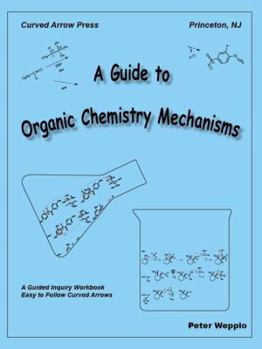A Guide to Organic Chemistry Mechanisms
Organic chemistry is a notably difficult course in which reaction mechanisms prove to be the greatest challenge. A Guide to Organic Chemistry Mechanisms uses example based teaching to break reaction mechanisms into manageable pieces at three levels of difficulty. This multi-tiered approach enables students to learn the logic of electron movement, repeat a reaction at a higher level, and finally to write a complete mechanism. At the first level of instruction, students start with nearly completed examples that they can solve by logic rather than rely on pattern matching or memorization. The knowledge gained at this level is raised by repetition at a more challenging level. Since their knowledge increases at each level, students succeed in writing complete solutions to problems. Thus, professors can replace traditional teaching, in which students passively copy notes, and replace it with productive thinking activities. Ultimately, students learn reaction mechanisms more easily and can apply them to new problems. Our reports show A Guide to Organic Chemistry Mechanisms successfully raised student scores on the American Chemical Society's standardized examination on organic chemistry by an average of 20 percentile points or more. The table of contents and index, including a new functional group transformation index, facilitate the guide's use with functional group or mechanism based textbooks. It is intuitively laid out with the same reaction occurring on the same page in each level for easy navigation. A Guide to Organic Chemistry Mechanisms can be used in large classes, small groups, or individually.
Format:Paperback
Language:English
ISBN:0977931307
ISBN13:9780977931309
Release Date:July 2008
Publisher:Curved Arrow Press
Length:404 Pages
Weight:2.20 lbs.
Dimensions:0.8" x 8.3" x 11.0"
Customer Reviews
0 rating





